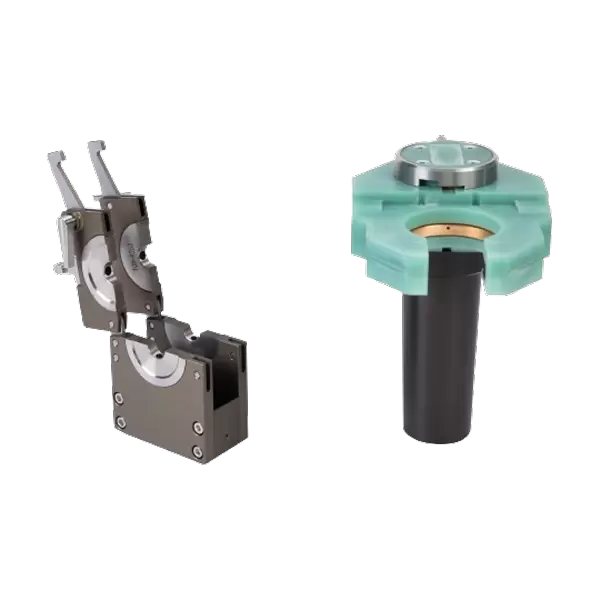- This topic is empty.
-
AuthorPosts
-
15/09/2025 at 14:11 #83242
Orbital welding machines are highly efficient equipment specialized for welding stainless steel pipes, widely used in industries such as petrochemicals, pharmaceuticals, food processing, and construction piping. Their high degree of automation, high welding precision, and consistent weld quality have made them indispensable in modern industrial welding. However, in actual production, orbital welding machines can still experience various malfunctions after prolonged operation or improper operation, impacting welding efficiency and product quality. Therefore, understanding common orbital welding machine malfunctions and their solutions is crucial to ensuring smooth production.
1. Common Orbital Welding Machine Faults
The main operating principle of an orbital welding machine is to continuously weld stainless steel pipes by moving the welding head along a track. Although the equipment structure is relatively simple, it involves multiple components, including faults in the electrical control system, pneumatic system, welding power supply, and track drive system. Common faults include:
Uneven welds
Issues related to the welding head failing to move properly
Unstable welding power supply
Issues related to pneumatic control malfunctions
Operation interface alarms or program errors
Below, we will analyze the causes and solutions of each of these faults, along with operational tips for orbital welding machines.

2. Causes and Solutions for Uneven Welds
Uneven welds are the most common problem encountered when welding stainless steel pipes using orbital welding machines. These problems manifest as uneven weld widths, uneven weld beads, or porosity. The main causes include:
Improper welding parameter settings
Excessively high or low current, mismatched welding speeds, and uneven wire feed speeds can all lead to uneven welds.
Solution: Optimize the orbital welding machine parameters by adjusting the welding current, welding speed, and wire feed speed based on the thickness, diameter, and material of the stainless steel pipe.
Dust accumulation or damage on the rails or guides
Dust, iron filings, or insufficient lubrication on the guides can cause the welding head to move unsteadily.
Solution: Regularly clean and lubricate the rails, check their flatness, and calibrate or replace the guides as necessary to ensure smooth welding of stainless steel pipes.
Worn or misaligned welding head
Worn welding nozzles and guides can easily cause the wire to deviate from the center of the weld.
Solution: Regularly inspect the condition of the welding head and promptly replace worn parts to ensure welding accuracy.
Insecure Pipe Fixtures
Slight movement of the pipe during welding can also cause uneven welds.
Solution: Use specialized clamps to secure the pipe to prevent displacement during welding, ensuring high-precision welds.
3. Causes and Solutions for Welding Head Failure
The welding head of an orbital welding machine often fails to move, often exhibiting stalling, jittering, or jamming, which directly impacts weld quality. Main causes include:
Drive System Failure
Wear in the motor, reducer, or gears, or loose or broken belts.
Solution: Check the motor's operating status, regularly replace worn gears and drive belts, and maintain proper lubrication of the reducer to ensure smooth operation of the orbital welding machine.
Electrical Control Abnormalities
Failures in the control circuit, stepper motor driver, or sensor can cause the welding head to fail to move.
Solution: Check the electrical connections for security, use a multimeter to verify the proper functioning of the motor and sensor, and replace damaged components if necessary to ensure proper automatic welding.
Guideline Blockage or Insufficient Lubrication
Foreign objects or lack of lubrication in the guide rails can also cause difficulty in welding head movement. Solution: Clean impurities from the rails and regularly add lubricating oil or grease to ensure smooth movement of the welding head.
4. Causes and Solutions of Unstable Welding Power Supply
Unstable welding power supply can cause weld defects, porosity, or insufficient weld penetration. The main causes are:
Power supply fluctuations
Unstable factory power supply or aging wiring.
Solution: Install a voltage stabilizer or UPS to ensure stable current for the orbital welding machine.
Poor welding cable contact
Loose or poor cable contact can affect current output.
Solution: Regularly check cable connections to ensure good contact.
Aging internal components of the welding machine
Aging rectifier bridges and filter capacitors can cause unstable output current.
Solution: Regularly maintain the welding machine and replace aging components to ensure stable welding power supply.
5. Causes and Solutions of Abnormal Pneumatic Control
Orbital welding machines are often equipped with pneumatic clamping devices or wire feeders. Abnormal pneumatic control can cause delayed welding head movement or loose clamping:
Insufficient air source pressure
Low air compressor pressure or air pipe leaks.
Solution: Check air compressor pressure, repair air pipe leaks, and ensure proper pneumatic clamping. Pneumatic valve or cylinder failure
Valve stuck or cylinder leaking.
Solution: Clean the valve, replace the seal, and check if the cylinder needs replacement.
Abnormal solenoid valve control signal
Loose wiring or PLC program error.
Solution: Check the solenoid valve wiring, re-download the PLC program, or debug it to ensure reliable automatic control of the orbital welding machine.
6. Causes and Solutions for Operator Interface Alarms or Program Abnormalities
Modern orbital welding machines are equipped with a PLC or touch screen operator interface for easy parameter setting and fault monitoring. Possible problems include:
Parameter input errors
Improper settings for welding current, welding speed, and wire feed speed.
AuthorPostsViewing 1 post (of 1 total)- You must be logged in to reply to this topic.


